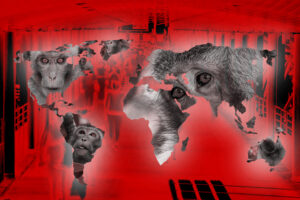The World Health Organization recently declared the current monkeypox epidemic a public health emergency. First identified in laboratory monkeys in 1958, the monkeypox virus is in the Poxviridae family of linear, double-stranded DNA viruses, which also includes smallpox and cowpox. Monkeypox first appeared in humans in Zaire in 1970 after the eradication of smallpox, and sporadic outbreaks have occurred in Central and West Africa. With an incubation period of 6 to 13 days, the primary mode of transmission has typically been through large respiratory droplets requiring prolonged face-to-face contact. Transmission also occurs through direct contact with blood fluid or lesions or indirect contact of contaminated material. Transfusion-transmission of monkeypox is only theoretical, and viral levels in blood are not well characterized; no cases of transfusion-transmission have been documented. Recently, the U.S. Food & Drug Administration (FDA) released a Safety and Availability communication stating that routine measures already present for screening donors “are likely to identify individuals who present to donate who are diagnosed with monkeypox or who are currently at the greatest risk of infection with monkeypox virus.” The FDA will continue to monitor the monkeypox epidemic and provide additional information as it becomes available.
References:

